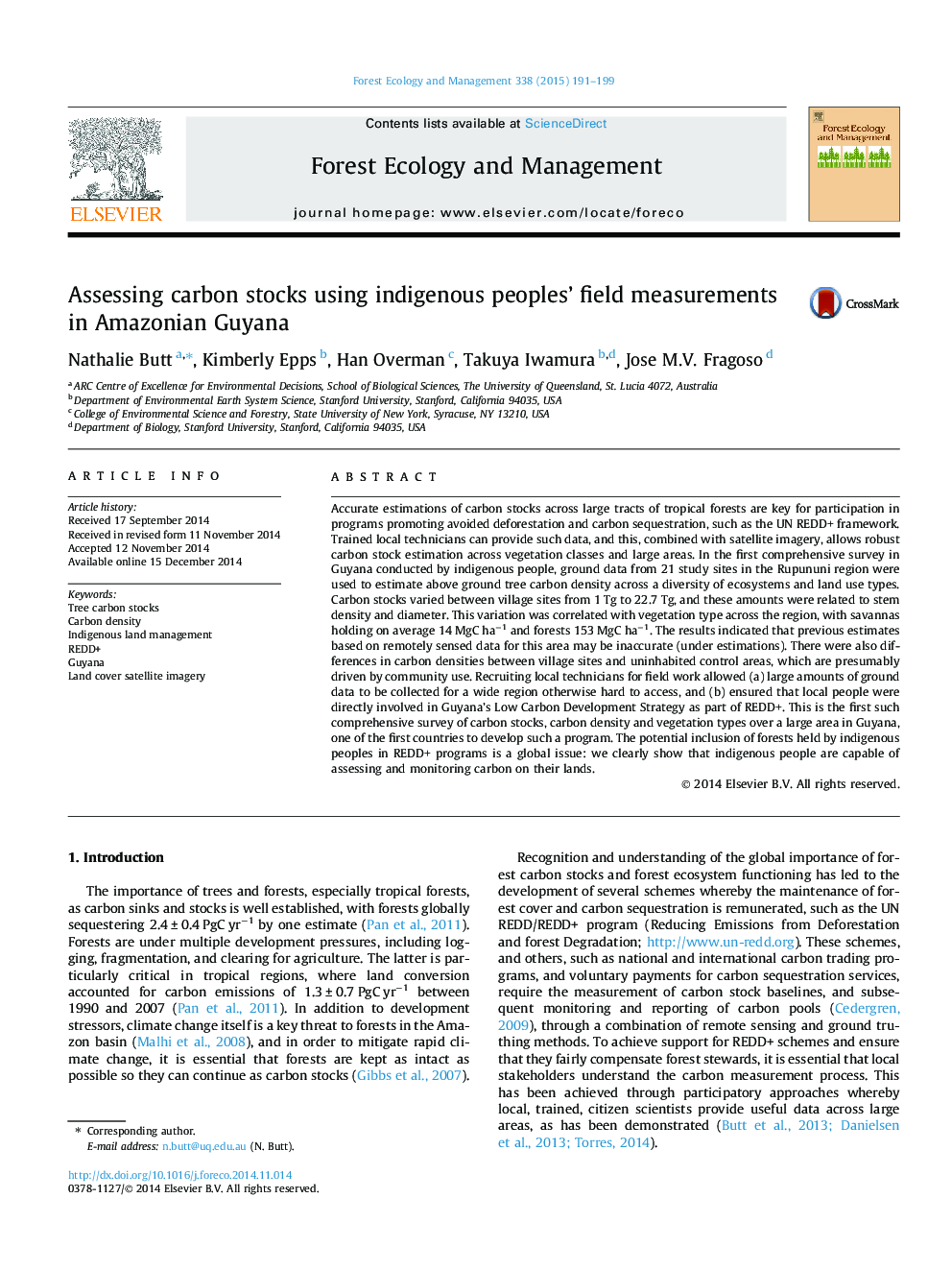| کد مقاله | کد نشریه | سال انتشار | مقاله انگلیسی | نسخه تمام متن |
|---|---|---|---|---|
| 86392 | 159183 | 2015 | 9 صفحه PDF | دانلود رایگان |
• Well-trained local workers are capable of assessing and monitoring carbon on their lands.
• Using only remotely sensed data for forest carbon assessments may result in inaccurate estimates.
• Indigenous people should be partners in REDD+ and similar schemes.
Accurate estimations of carbon stocks across large tracts of tropical forests are key for participation in programs promoting avoided deforestation and carbon sequestration, such as the UN REDD+ framework. Trained local technicians can provide such data, and this, combined with satellite imagery, allows robust carbon stock estimation across vegetation classes and large areas. In the first comprehensive survey in Guyana conducted by indigenous people, ground data from 21 study sites in the Rupununi region were used to estimate above ground tree carbon density across a diversity of ecosystems and land use types. Carbon stocks varied between village sites from 1 Tg to 22.7 Tg, and these amounts were related to stem density and diameter. This variation was correlated with vegetation type across the region, with savannas holding on average 14 MgC ha−1 and forests 153 MgC ha−1. The results indicated that previous estimates based on remotely sensed data for this area may be inaccurate (under estimations). There were also differences in carbon densities between village sites and uninhabited control areas, which are presumably driven by community use. Recruiting local technicians for field work allowed (a) large amounts of ground data to be collected for a wide region otherwise hard to access, and (b) ensured that local people were directly involved in Guyana’s Low Carbon Development Strategy as part of REDD+. This is the first such comprehensive survey of carbon stocks, carbon density and vegetation types over a large area in Guyana, one of the first countries to develop such a program. The potential inclusion of forests held by indigenous peoples in REDD+ programs is a global issue: we clearly show that indigenous people are capable of assessing and monitoring carbon on their lands.
Journal: Forest Ecology and Management - Volume 338, 15 February 2015, Pages 191–199
